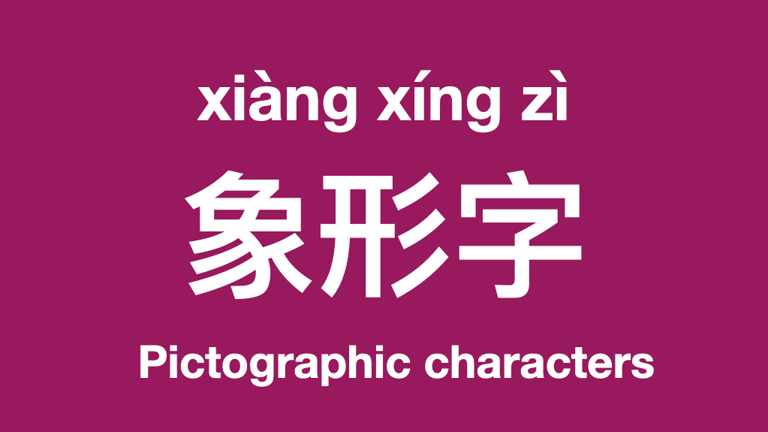

象形文字 (Xiàngxíng Wénzì) - Pictographic Characters
象形文字 are the earliest form of Chinese characters, and they are derived from pictures that represent the objects they depict. These characters are highly visual and resemble the objects or concepts they stand for.
Key Characteristics:
- Visual Representation: These characters are designed to visually resemble physical objects.
- Simplified Drawings: Over time, the pictorial representations have been stylized and simplified.
Examples of 象形文字:
1. 日 (rì, sun)
- Pictographic Origin: Originally depicted as a circle with a dot or line in the center, representing the sun.
- Modern Form: 日
- The character 日 has simplified into a square shape with a line through the middle.
2. 月 (yuè, moon)
- Pictographic Origin: Initially depicted as a crescent moon.
- Modern Form: 月
- The character 月 now resembles a rectangle with two curves on the right side.
3. 山 (shān, mountain)
- Pictographic Origin: Represented by a series of peaks.
- Modern Form: 山
- The character 山 is stylized to three vertical strokes, with the middle one being the highest.
4. 水 (shuǐ, water)
- Pictographic Origin: Illustrated by flowing streams of water.
- Modern Form: 水
- The character 水 is now simplified to resemble three downward flowing lines with a horizontal stroke.
5. 木 (mù, tree)
- Pictographic Origin: Initially depicted as a tree with branches and roots.
- Modern Form: 木
- The character 木 now appears as a cross with two short diagonal strokes at the bottom, representing the roots.
6. 人 (rén, person)
- Pictographic Origin: Drawn as a simple standing figure.
- Modern Form: 人
- The character 人 has been simplified to two strokes forming a figure.
7. 口 (kǒu, mouth)
- Pictographic Origin: Shown as a square or circular shape representing an open mouth.
- Modern Form: 口
- The character 口 is now a simple square shape.
8. 牛 (niú, cow)
- Pictographic Origin: Originally depicted with a head and horns.
- Modern Form: 牛
- The character 牛 has been stylized to resemble a cow’s head with horns.
9. 鱼 (yú, fish)
- Pictographic Origin: Shown as a fish with fins and tail.
- Modern Form: 鱼
- The character 鱼 is simplified to maintain the basic shape of a fish.
10. 鸟 (niǎo, bird)
- Pictographic Origin: Depicted with a beak, wings, and legs.
- Modern Form: 鸟
- The character 鸟 has evolved to a more abstract form but retains elements like the beak and wings.
Summary:
- 象形文字 form the foundation of Chinese characters.
- These characters are designed to be intuitive and represent the visual form of objects.
- Over time, they have been stylized and simplified, making them less pictorial but still reflective of their original meanings.
Understanding 象形文字 helps in grasping the logic and evolution of Chinese characters. Would you like to explore more examples or delve into other types of Chinese characters?
